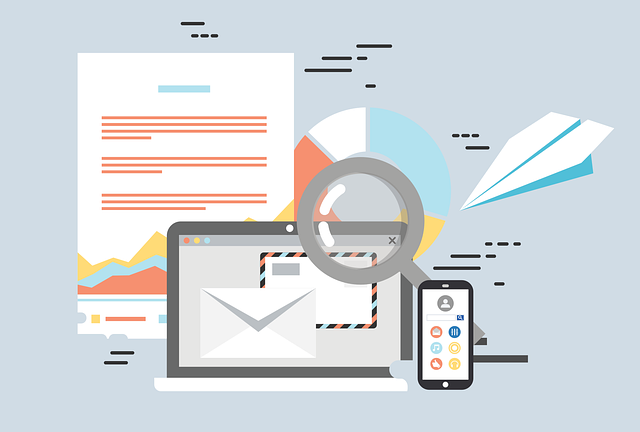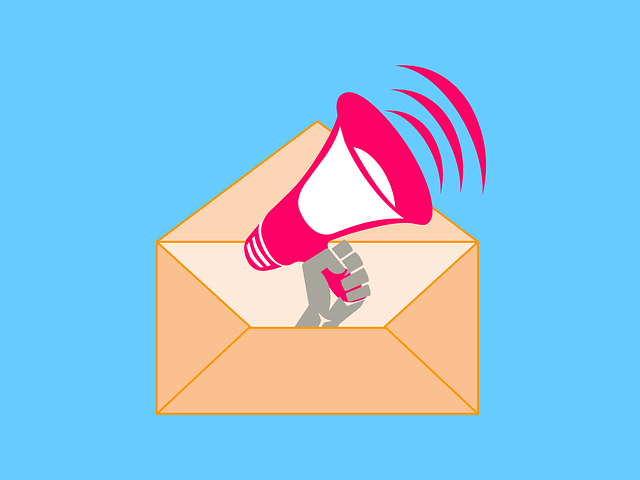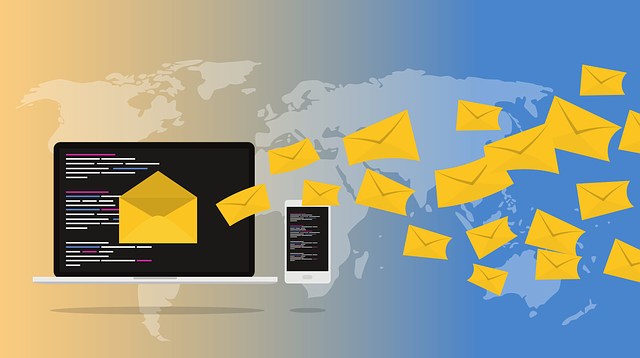You might be thinking, ‘With the rise of social media platforms, is email marketing still relevant for bloggers?’ It’s a valid concern, but let us assure you that email marketing is not only relevant, but it’s also a powerful tool that can significantly boost your blogging success.
In fact, when it comes to engaging with your target audience, converting leads into customers, and distributing your content effectively, email marketing has proven to be more effective than social media.
Why is that? Well, email marketing allows for targeted audience engagement, ensuring that your messages reach the right people at the right time. It also boasts higher conversion rates and a better return on investment compared to social media. Additionally, email marketing provides the opportunity for personalization and customization, allowing you to build deeper connections with your readers.
In this article, we’ll delve into the various aspects of email marketing and social media, such as content distribution, direct communication, and cost-effectiveness. By the end, you’ll have a clear understanding of why email marketing is the superior choice for bloggers looking to grow their audience and achieve their goals.
So let’s dive in and discover why email marketing reigns supreme in the blogging world.
Key Takeaways
- Email marketing is more effective than social media for engaging with the target audience, converting leads into customers, and distributing content.
- Email marketing allows for targeted audience engagement and personalized campaigns.
- Email marketing has higher conversion rates and a better return on investment compared to social media.
- Email marketing provides better analytics tracking, allowing bloggers to make data-driven decisions and understand what resonates with their audience.
Targeted Audience Engagement
You can’t afford to miss out on the power of targeted audience engagement – it’s the key to connecting with your readers on a deeper level and igniting their passion for your blog!
With personalized campaigns, email marketing allows you to tailor your messages directly to your subscribers’ interests and preferences. By segmenting your email list and sending targeted content, you can ensure that your readers receive the information they want, increasing their engagement and loyalty.
On the other hand, social media advertising offers the advantage of reaching a wider audience and targeting specific demographics. With the ability to gather data on user behavior and interests, social media platforms allow you to create targeted ad campaigns that resonate with your ideal readers.
Transitioning into the next section, let’s discuss how these engagement strategies impact conversion rates and ROI.
Conversion Rates and ROI
When it comes to measuring the success of campaigns, focusing on conversion rates and ROI can provide valuable insights for bloggers. Conversion optimization is crucial in determining how effective your marketing efforts are in turning visitors into customers. Social media advertising can be a powerful tool in driving conversions, as it allows you to reach a wide audience and target specific demographics. However, email marketing also has its advantages when it comes to conversion rates. By building a strong email list and sending personalized, targeted messages, you can increase the likelihood of conversions. To help you understand the differences between email marketing and social media in terms of conversion rates and ROI, take a look at the table below:
| Social Media Advertising | Email Marketing | |
|---|---|---|
| Conversion Rates | Can vary depending on the platform and targeting | Higher conversion rates with personalized emails |
| ROI | Can be difficult to measure accurately | Can provide a higher return on investment |
Both Email Marketing and social media advertising have their strengths in terms of conversion rates and ROI. However, email marketing tends to have higher conversion rates and a higher return on investment. Moving forward, let’s explore another important aspect: content distribution and reach.
Content Distribution and Reach
To maximize your reach and distribute your content effectively, consider utilizing different channels and platforms.
Content distribution is crucial for bloggers, as it allows you to connect with a wider audience and increase your visibility. One strategy is content curation, where you share valuable and relevant content from other sources with your audience. This not only helps you provide diverse perspectives but also positions you as a trusted source of information.
Another effective approach is collaborating with social media influencers who have a large following in your niche. By partnering with them to promote your content, you can tap into their audience and expand your reach.
These strategies will help you increase your content’s visibility and engagement, setting the stage for personalization and customization in the next section.
Personalization and Customization
When it comes to personalization and customization, email marketing has the upper hand. Tailoring your email campaigns to individual subscribers’ interests and preferences allows you to deliver targeted content that resonates with your audience.
On the other hand, social media algorithms can also be leveraged to deliver personalized content to specific audiences, ensuring that your message reaches the right people at the right time.
However, email marketing provides a more direct and intimate way to connect with your subscribers, making it a powerful tool for bloggers looking to build a loyal following.
Tailoring email campaigns to individual subscribers’ interests and preferences
You can create highly personalized email campaigns that cater to your subscribers’ interests and preferences. This includes sending exclusive content or offers based on their past purchases or browsing history.
Email segmentation techniques and behavioral tracking for email marketing allow you to divide your subscriber list into different segments based on their demographics, behavior, or preferences. This segmentation allows you to tailor your emails to each segment, increasing the chances of engagement and conversion.
For example, imagine you have a fashion blog and one of your subscribers frequently reads your articles about sustainable fashion. You can send them a targeted email with a discount code for eco-friendly clothing brands. By tailoring your email campaigns in this way, you can provide value to your subscribers and nurture a stronger relationship with them.
Moving on to utilizing social media algorithms to deliver targeted content to specific audiences…
Utilizing social media algorithms to deliver targeted content to specific audiences
So, you’ve learned about tailoring email campaigns to individual subscribers’ interests and preferences. Now let’s dive into another powerful tool for reaching your audience: social media algorithms.
These algorithms are designed to deliver targeted content to specific audiences, allowing you to reach the right people at the right time. By utilizing social media algorithms effectively, you can amplify your blog’s visibility and engagement. It’s all about understanding your audience and using strategies like creating relevant and shareable content, leveraging hashtags, and engaging with your followers.
To make the most of social media algorithms, consider the following points:
- Use analytics to understand your audience demographics and preferences.
- Tailor your content to match their interests and needs.
In the next section, we’ll explore the importance of direct communication and relationship building in both email marketing and social media strategies.
Direct Communication and Relationship Building
Engage your audience and foster stronger connections by utilizing direct communication and relationship building through email marketing or social media. Both platforms offer opportunities to connect with your readers on a personal level, which can lead to increased customer loyalty and direct sales.
With email marketing, you can send personalized messages directly to your subscribers, allowing for targeted communication. Social media, on the other hand, provides a platform for real-time interactions and engagement through comments, likes, and shares. By actively responding to comments and messages, you can build rapport and establish trust with your audience.
These direct communication methods are essential for building relationships and keeping your readers engaged.
Transitioning into the subsequent section about the ‘cost-effectiveness and time efficiency’, you can also consider the benefits of these strategies in terms of their impact on your overall marketing efforts.
Cost-effectiveness and Time Efficiency
Now that you understand the importance of direct communication and relationship building, let’s discuss the cost-effectiveness and time efficiency of email marketing and social media for bloggers.
-
Cost-effectiveness: Email marketing tends to be more cost-effective than social media as it allows you to reach a larger audience at a lower cost. With email marketing platforms, you can send personalized emails to a targeted list of subscribers without spending much on advertising.
-
Analytics tracking: Email marketing provides detailed analytics tracking, allowing you to measure the effectiveness of your campaigns. You can track open rates, click-through rates, and conversions, which helps you understand what resonates with your audience and make data-driven decisions.
-
Time efficiency: Social media requires active engagement and constant content creation, which can be time-consuming for bloggers. On the other hand, email marketing allows you to automate your campaigns, saving you time to focus on other aspects of your blog.
-
Overall, email marketing offers better marketing effectiveness and analytics tracking while being more time-efficient and cost-effective for bloggers.
Frequently Asked Questions
What are some effective strategies to engage a targeted audience through email marketing?
Engaging your targeted audience through email marketing requires personalization techniques and targeted segmentation.
Think of it like crafting a hand-written letter that speaks directly to each individual reader. By using their name, tailoring your content to their interests, and offering exclusive deals or content, you can create a deeper connection.
With email marketing, you have the power to build a loyal and engaged audience who eagerly anticipates your emails.
How can bloggers measure conversion rates and return on investment (ROI) when using social media platforms?
To measure the effectiveness of your social media efforts as a blogger, you can track conversions and calculate your return on investment (ROI).
Start by setting specific goals, such as increasing website traffic or gaining more subscribers.
Use tracking tools and analytics to monitor the number of clicks, likes, shares, and comments your posts receive.
Additionally, you can track how many of these interactions actually lead to conversions, such as email sign-ups or product purchases.
This data will help you evaluate the success of your social media campaigns and adjust your strategies accordingly.
Are there any specific tactics to increase the reach of blog content through social media?
Looking to boost your blog’s reach through social media? Well, you’re in luck! There are some clever tactics you can employ to outsmart those pesky social media algorithms.
Firstly, focus on creating high-quality and engaging content that resonates with your audience.
Then, make sure to promote your content effectively by using relevant hashtags, collaborating with influencers, and engaging with your followers.
By mastering these strategies, you’ll see your blog’s reach skyrocket in no time!
What tools or techniques can bloggers use to personalize and customize their email marketing campaigns?
To personalize and customize your email marketing campaigns, there are several techniques and tools you can use.
Firstly, segment your email list based on demographics, interests, or previous interactions. This allows you to send targeted content that resonates with each subscriber.
Secondly, use dynamic content that adapts to each recipient’s preferences. This can include personalized subject lines, product recommendations, or even tailored email layouts.
Lastly, utilize automation tools to send personalized emails at the right time, based on triggers like birthdays or previous purchases.
How can bloggers build direct communication and establish relationships with their audience through social media platforms?
To build direct communication and establish relationships with your audience through social media platforms, consider these strategies.
First, collaborate with influencers in your niche to expand your reach and credibility.
Second, host live video sessions where you can interact with your audience in real-time and address their questions or concerns.
These tactics help you connect on a personal level, foster trust, and ultimately grow your blog’s following.
Now, let’s compare these methods to email marketing and social media to determine the most effective approach for bloggers.
Conclusion
In conclusion, when it comes to choosing between email marketing and social media for bloggers, it’s important to consider your goals and target audience.
While social media offers a wide reach and engagement, email marketing allows for personalized communication and relationship building.
Ultimately, a combination of both strategies may be the key to success. Remember, "Don’t put all your eggs in one basket."
By diversifying your marketing efforts, you can effectively connect with your audience and maximize your blog’s impact.









